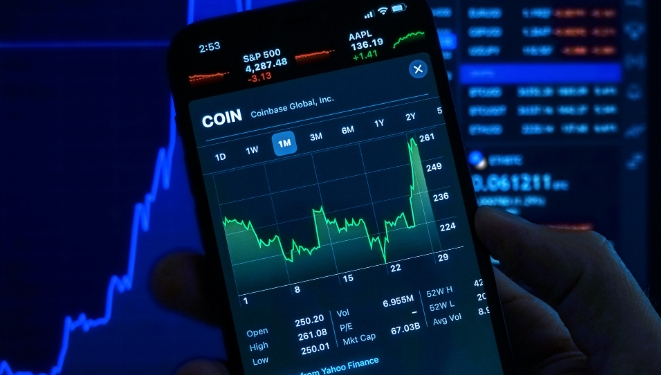Introduction to Bank of America’s Dividend Payout Strategy
As a major player in the financial sector, Bank of America (BofA) has established itself as a reliable source of dividends for its shareholders. For investors seeking steady returns from their portfolios, understanding Bank of America’s dividend payout schedule for 2025 is essential. BofA is known for its consistent performance, and its dividend policy plays a crucial role in attracting long-term investors.
In 2025, Bank of America’s approach to dividend payouts will remain a key focal point for those who have invested in its stock or are considering doing so. Investors view dividends as an essential aspect of their returns, making it crucial to stay informed about the payout schedule, eligibility, and other important factors related to dividends.
What Are Dividends and Why Do They Matter?
Dividends are payments made by a corporation to its shareholders, typically in the form of cash or additional shares. These payouts are made from the company’s profits, and they serve as a way for companies to share a portion of their earnings with investors. For stock market investors, dividends are an important component of overall returns. Dividends provide a consistent income stream, which can be reinvested or used for other purposes.
For dividend investors, regular payouts from a reputable company like Bank of America can offer a sense of financial stability. In the case of BofA, its commitment to returning value to shareholders through dividends has been an attractive feature for many investors. With a solid dividend payout schedule in 2025, Bank of America continues to demonstrate its ability to generate steady profits and distribute a portion of those profits to its investors.
Bank of America’s Dividend Policy in 2025
Bank of America has a long history of paying dividends to its shareholders. The company’s dividend policy reflects its financial stability and commitment to rewarding investors. In 2025, the dividend payout schedule will follow a quarterly pattern, with dividends paid every three months. This consistent payout schedule makes Bank of America an attractive option for income-focused investors.
The company’s board of directors regularly reviews the dividend payout, considering factors such as earnings performance, financial health, and economic conditions. Any changes to the dividend policy are typically announced in advance, giving investors ample time to adjust their expectations.
Bank of America is known for its commitment to providing dividends that are competitive with other financial institutions. The company’s dividend yield, which represents the annual dividend as a percentage of the stock price, is a key factor for investors to consider. A higher dividend yield can signal a more attractive investment, particularly for those looking for income from their investments.
Details of Bank of America’s Dividend Payouts for 2025
In 2025, Bank of America’s dividend schedule will consist of four quarterly payouts. These payouts are made to shareholders who own the stock before the ex-dividend date, which is the date on which new buyers of the stock are not eligible for the upcoming dividend. Below is an outline of the projected dividend schedule for 2025:
- Q1 2025: March 31, 2025 – Dividend payout to be announced
- Q2 2025: June 30, 2025 – Dividend payout to be announced
- Q3 2025: September 30, 2025 – Dividend payout to be announced
- Q4 2025: December 31, 2025 – Dividend payout to be announced
This schedule is typical for Bank of America and follows the usual pattern of quarterly payments. These payments are made to shareholders who hold the stock at the close of business on the record date, which is set a few days before the ex-dividend date. Investors must ensure they purchase the stock before the ex-dividend date in order to qualify for the upcoming dividend payout.
How to Qualify for Bank of America’s Dividends
To receive a dividend from Bank of America, shareholders must meet certain criteria. First and foremost, they must be shareholders of record on the designated record date. The ex-dividend date is the cutoff date for determining who is eligible for the dividend, so investors must purchase shares before this date to qualify. For instance, if the ex-dividend date is set for March 15, an investor must purchase shares before that date in order to be eligible for the dividend paid in late March.
Additionally, investors must ensure that they hold the stock for the necessary period before the ex-dividend date. This is typically one business day, known as the “T 1” rule, meaning that shares must be purchased one business day before the ex-dividend date to receive the dividend.
Factors That Impact Bank of America’s Dividend Payments
Several factors can influence Bank of America’s dividend payments in 2025. The company’s ability to generate profits is the primary factor that determines the size of its dividend payouts. However, several other factors can also play a role:
- Economic Conditions: Economic conditions can significantly affect a bank’s ability to pay dividends. A downturn in the economy or unfavorable market conditions could reduce earnings and impact dividend payouts. Conversely, strong economic growth can lead to increased profits and higher dividend payments.
- Bank Performance: Bank of America’s performance in terms of revenue, profit, and cost management will influence its dividend policy. If the bank is performing well and generating consistent earnings, it is more likely to maintain or increase its dividend payouts.
- Regulatory Environment: Banks are subject to regulatory scrutiny, and changes in regulations can affect dividend payouts. For example, the Federal Reserve can impose restrictions on dividends during periods of economic uncertainty or if the bank’s capital requirements are not met.
- Interest Rates: The prevailing interest rate environment also impacts Bank of America’s ability to generate profits and pay dividends. Higher interest rates can benefit banks by increasing their net interest margins, potentially allowing them to increase dividend payouts. Conversely, lower interest rates can reduce profitability and constrain dividend growth.
Tax Implications of Receiving Bank of America Dividends
Investors should be aware of the tax implications of receiving dividends from Bank of America. In the United States, dividends are generally taxed at a rate determined by whether they are classified as qualified or non-qualified dividends. Qualified dividends are typically taxed at a lower rate than non-qualified dividends.
For Bank of America, the company’s dividends are generally considered qualified dividends, provided they meet certain criteria. However, investors should consult with a tax professional to determine how dividends will be taxed based on their individual circumstances. Tax laws can change, so it is important for investors to stay informed about current regulations.
Reinvesting Dividends: A Strategy for Long-Term Growth
One of the most effective ways to benefit from Bank of America’s dividend payouts is to reinvest those dividends back into additional shares of the company. Reinvesting dividends allows investors to take advantage of the power of compounding, where the income generated from dividends is used to purchase more stock, which in turn generates more dividends.
Over time, this strategy can significantly increase the total return on investment. For investors with a long-term perspective, reinvesting dividends can lead to substantial growth in the value of their investment. Many brokerage firms offer dividend reinvestment plans (DRIPs), which automatically reinvest dividends into more shares of stock, making the process seamless and efficient.
Conclusion: The Role of Bank of America’s Dividends in a Balanced Portfolio
In 2025, Bank of America’s dividend payouts are expected to remain a key attraction for investors seeking steady income from their investments. The company’s commitment to rewarding shareholders through consistent quarterly payouts makes it a valuable addition to many investors’ portfolios. While dividends are not guaranteed, Bank of America’s strong financial position and history of consistent payouts make it a reliable choice for income-focused investors.
For those who are new to dividend investing or those looking to adjust their investment strategies, understanding Bank of America’s dividend schedule and the factors that influence payouts is crucial. By staying informed and considering dividend reinvestment strategies, investors can enhance their long-term growth potential and achieve greater financial security through steady dividend income.
Whether you are a seasoned investor or just starting out, Bank of America’s dividend payouts in 2025 provide an opportunity for growth and stability in a fluctuating market.










